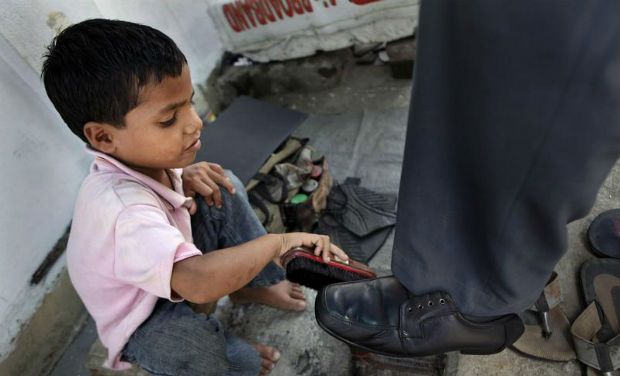Children’s Day And Child Labour: Lost Childhood
By John Gaingamlung Gangmei
30 November, 2015
Countercurrents.org

The 14th November, the Children’s Day of the nation was celebrated with much funfair and awards all over our country. We also envisage a beautiful nation reminding our children, ‘you are the future pillar of the nation/ society’. Can we imagine how many of our young minds (children) get an opportunity to celebrate this beautiful day in their lifetime? Despite having legislation against the child labour particularly in hazardous and non hazardous sectors, large numbers of children are still engaged in both the sectors with low wages, long hours of work and exposed to mental, sexual and physical harassment as per many studies on child labour in India. The penalty for employing any child to work in occupations enlisted in the schedule which are prohibited as per Child Labour Act is “Whoever employ child or permit any child to work in contravention of the provisions of the section 3 shall be punishable with imprisonment for a term which shall not be less than three (3) months but which may extend to one year or with fine which shall not be less than ten thousand rupees but which may extend to twenty thousand rupees or with both” Offenders can only be tried in courts higher than a magistrate or metropolitan magistrate of the first class. Courts also have the authority to appoint people to be inspectors under this act.
Above all we must not forget India has one of the largest numbers of child labours in the world. According to the Ministry of Labour and Employment, Government of India report that there are 1.26 crore working children in the age group of 5-14 as compared to the total child population of 25.2 crore as per Census 2001. There are approximately 12 lakhs children working in the hazardous occupations/processes which are covered under the Child Labour (Prohibition & Regulation) Act 1986 i.e. 18 occupations and 65 processes. The National Sample Survey Organisation (NSSO) in 2004-05 reports that the number of working children is estimated at 90.75 lakh. As per Census 2011, the number of working children in the age group of 5-14 years has further reduced to 43.53 lakh. Our state is not far behind in contributing to these data, as per National Commission for Protection of Child Labour (NCPCL) and Ministry of Labour and Employment in Arunachal Pradesh the working children in the age group of 5-14 are 12,395 in 1991, 18,482 in 2001 and 5,766 in 2011. i.e. sudden increase and decrease in the incident of child labour in two decades. It is worrisome to witness the increasing trends and phenomenon of employing child labour in households, restaurants, hotels, dhabbhas, tea stalls etc in our state. According to the Telegraph June 2014, 6 per cent of children in Arunachal are engaged as child labour. As per the details put forth by Assistant Commissioner of Arunachal Pradesh 2526 children were identified as bonded labourers in 2011, needless to mention here that this is an official record and nearly same amount goes unaccounted as for the scale and intensity of the concern social problem in India. The representative of the government official and non-governmental organization expressed their inability in preventing increasing incident of child labour due to lack of public awareness. Recently the cabinet has agreed to the amendment in the Child Labour Acts, however, it has allowed a small exemption for children below the age of 14 can work in family enterprises, farm lands but only after school hours and on holidays. The condition is that such enterprises should not engage in any hazardous occupation. Nevertheless what is our (society, civil society, faith based organization, student organization etc) role and responsibility toward the young mind and the nation? Can we give the young mind the rights to pursue their dreams?
We, the citizen and state, are equally responsible in upholding the spirit of United Nations Convention on the Rights of the Child (UNCRC, 1992): Survival, Development, Protection and Participations Rights of the children. So do these young mind’s doesn’t deserve their rights to celebrate their childhood. In this context the state and all of us need to address the issue collectively in nurturing and protecting the young mind’s rights to celebrate their childhood at the fullest. Child labour is not a family issue rather it is a societal issue, a cultural issue and a human rights issue. We can collectively work towards for prevention and elimination of child labour. Majority of issues identified against Child rights viz Child rights are mere symptoms and diseases are left alone. There is an acute and immediate need to rekindle both individual and collective consciousness. It is also required to ensure on the part of the government that not only strict legislations are formulated in this regards but their due implementations is ensured through regular checks and balances. However, onus can’t be left on the governments alone but civil society too needs to take more organized and proactive steps in this issue. I would like to end my short article with Ms. Shanta Sinha a Child Right Activist (founder of MV Foundation and former Chairperson of NCPCR) statement ‘Child labour exists because we allow it to exist’.
John Gaingamlung Gangmei, Assistant Professor, Department of Social Work, Rajiv Gandhi University, Arunachal Pradesh.

